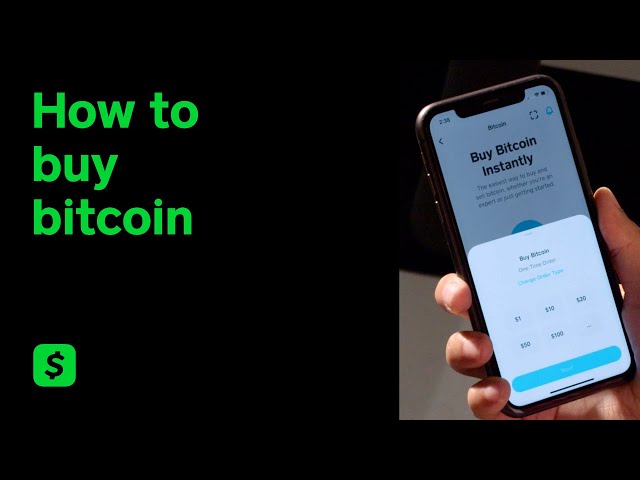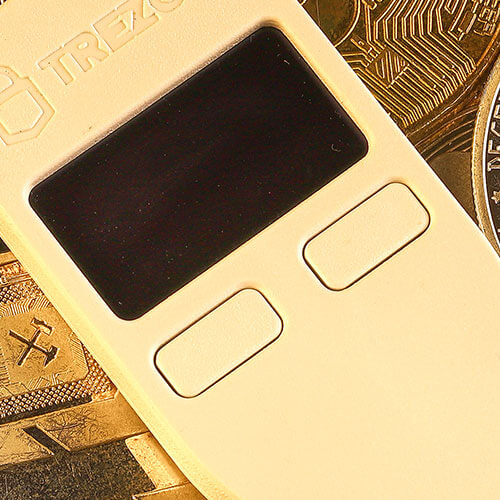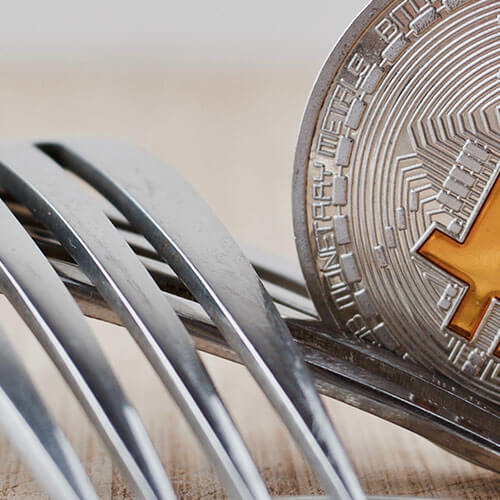What Is Spoofing in Trading?
Traders have long relied on bluffs to predict and take advantage of market movements. But in the digital era, they are no longer standing in front of each other on trading floors, selling and buying by hand gestures. Traders can now sit back and monitor market trends on their mobile and computer screens.
However, as traders have adapted to the evolving technology, so too have the frauds. Scammers developed new trading tactics to make profits, using computer trading software and algorithms to swamp the market with fraudulent orders.
One such trading strategy that is used to manipulate other market participants into buying or selling their assets en masse in order to profit from price swings is called spoofing. We’ve put together a comprehensive guide on what spoofing is and how it works with various assets including both stocks and cryptocurrency.
What Is Spoofing?
Spoofing is a form of market manipulation in which traders place large orders on one side of the order book – a sell or buy order for high amounts that exceeds the best bid in the order book. The large order creates the impression that the market is moving, spooking other market participants to buy or sell their assets.
However, this order is actually a bogus order that will be cancelled once the tactic is successful. The spoofer actually plays both sides of the market by placing two orders on the opposite sides of the order book: one is the large spoof order that gets cancelled after the price swing, the other a real order spoofer executes when the market reaches the desired point.
Spoofing occurs when traders make a high number of orders to purchase or sell a certain financial asset, such as stocks, futures contracts, and cryptos, without intending to execute the orders. Spoofers intentionally increase the demand to boost their own profit. This manipulative trading tactic deceives other market players into believing that there is pressure to buy or sell an asset and “spoofs” other market traders into placing orders at falsely manipulated prices.
Spoofing has an impact on prices because it creates the illusion that the market is moving in one direction, inciting other market participants to catch up with the price swing. Spoofers frequently employ automated algorithmic trading to achieve their objectives.
What Is Algorithmic Trading?
Spoofing works thanks to algorithmic trading and high-frequency traders. Algorithmic trading involves the use of computer algorithms to facilitate trades and make financial market decisions. Software that use different algorithms race each other to place buy/sell orders to execute faster transactions and to make higher profits. Algorithms can scan financial markets to place and execute orders in milliseconds. Since humans can’t match the pace, algorithmic trading provides an advantage to traders that use this method.
High-frequency traders (HFT) often use algorithmic trading. As the name suggests, high-frequency traders execute high numbers of transactions at a very rapid pace, taking advantage of the best algorithmic trading software.
Neither high-frequency trading nor algorithmic trading is illegal by itself; in fact, professional crypto, stock, derivatives, and futures market traders and exchange financial services use them on a regular basis. Market exchange giants like Chicago Board of Trade, New York Mercantile Exchange, and Chicago Mercantile Exchange, and the professional traders that trade in these markets take advantage of HFT and algorithmic trading to predict price movements and increase their profits. But it is also possible to use these methods to manipulate the market and take advantage of other market participants through spoofing.
Let’s look at how spoofing is defined as criminal activity by regulators to see how it differentiates from high-frequency trading or algorithmic trading.
Spoofing Regulations and Enforcement Actions
Spoofing is prohibited by the Dodd-Frank Act of 2010, which describes it as “the illegal practice of bidding or offering with the intent to cancel the bid or offer before execution”. Spoofing can be used in conjunction with layering algorithms and front-running, both of which are illegal.
Security and Exchange Commissions building with US flags
The U.S. Securities and Exchange Commission (SEC) and The Commodity Futures Trading Commission (CFTC) in the United States are in charge of monitoring and regulating spoofing in the stock and commodities markets. However, it’s difficult to classify cancelled bids in the futures market as spoofing, unless the behaviour becomes very consistent. As such, authorities may track and monitor suspicious trading activity before fining, charging, or making spoofing inquiries.
Criminal and Civil Cases
There are some important milestone cases regarding spoofing and its persecution as a criminal activity. For example:
- Michael Coscia, an American trader, was charged with spoofing future markets using algorithmic trading software, in 2013. He had to pay $2.8M in penalties to resolve civil charges brought by the U.S. Commodity Futures Trading Commission. The US department of justice filed criminal charges against Michael the next year. According to the US Justice Department, Michael Coscia is alleged to have profited more than $1.5M by spoof trading.
- The CME Group Inc. is a conglomerate of market exchanges that tries to self-regulate against spoofing, in order to minimise intervention from civil and criminal authorities. The CME Group Inc. penalized Chicago-based Igor Oystacher for $150,000 in November 2014. The CME also barred Oystacher from trading for a month.
- Navinder Singh Sarao, a London based day trader, was charged with various civil and criminal charges in connection with the flash crash of 2010 which brought down the entire stock market to a record low in minutes. Sarao was charged with spoofing and market manipulation after placing a big order for E-Mini S&P 500 stock index futures contracts, with the intention of cancelling it before the large order was executed.
- In January 2018, the Commodity Futures Trading Commission (CFTC) punished three European banks, UBS, Deutsche Bank, and HSBC, for a total of $47M, after they were accused of market manipulation and using spoofing tactics.
Spoofing and Cryptocurrency Markets
Spoofing in cryptocurrency markets has started to become more visible in the last few years. As CFTC mainly focuses on monitoring traditional futures markets against spoofing, it was the cryptocurrency community itself that first raised the alarm against spoofing in crypto trading platforms. Let’s have a look at how allegations regarding spoofing on crypto platforms surfaced and how regulators are responding to these developments.
A Mysterious Presence on Trading Platforms “Spoofy”
The first serious allegations of spoofing activity in crypto markets can be traced back to a blog post called “Meet Spoofy. How a Single entity dominates the price of Bitcoin”. The author of the post shared observations on how Bitcoin prices on Bitfinex cryptocurrency exchange seemed to swing based on the suspicious trading activity of an anonymous trader, referred to by the blogger as the mysterious “Spoofy”. The post alleged that Spoofy placed large buy orders that raised the price of Bitcoin on the platform, allowing the trader to sell their assets for above-market prices. The blog slowly made ripples on and off the internet, and the story was later picked up by Bloomberg.
How Does Spoofy Manipulate Bitcoin Prices?
According to Kaiko, a cryptocurrency market data provider company for institutional investors, Bitcoin-Tether (BTC-USDT) trading pair accounts for 70% of all Bitcoin trades on cryptocurrency exchanges.
Tether is a crypto asset that is known as a “stablecoin”. Stablecoins differ from other crypto assets because they are supposed to be pegged to the US Dollar 1:1. That means 1 USDT should always be worth 1 USD, as the companies that issue Tether and other stablecoins back all the stablecoins they issue with US Dollars in company reserves. Or at least, that’s what they promised to do but it became apparent in 2021 that this hasn’t been the case.
But what does all this have to do with spoofing? Well, according to a pair of academics who specialize in fraud in exchange markets, Tether was used to manipulate Bitcoin prices through suspicious activity on the Bitfinex exchange platform. Bitfinex is a child company of iFinex, the company that also issues Tether.
The authors of the forensic study on Tether’s effect on Bitcoin price swings claim that large amounts of Tether were used to prop Bitcoin prices on the platform, influencing the digital assets price increase.
Bloomberg News also conducted its own study of Tether price movements on the Kraken crypto exchange in 2018, with help from academics and financial experts. According to their analysis, the Tether market on the Kraken exchange shows spoofing (also referred to as wash trading) patterns.
If the allegations are true, Ifinex and its child company Bitfinex had an unfair market advantage: they used insider resources to manipulate the market.
The Tether Saga
Tether was founded in 2014 by Brock Pierce, Craig Sellars, and Reeve Collins. The digital asset started trading on the Bitfinex cryptocurrency exchange in 2015. At the time, Bitfinex and Tether denied they were part of the same parent company, but the connection was revealed in the famous “Paradise Papers” in 2017.
After the original blog post that connected Tether movements to Bitcoin price swings started making rounds, doubts about the legitimacy of Tether operations started to surface. Tether failed to provide an audit of its reserves in January 2018 and it was subpoenaed by the CTFC for an investigation.
The New York Attorney General’s Office opened a fraud investigation against Tether and Bitfinex that cost Ifinex 18.5 million dollars in fines. In 2021, Tether was fined 41 million dollars after a CTFC investigation revealed that Tether didn’t have the reserves it promised to have. According to Bloomberg News, Tether executives are also under investigation regarding bank fraud.
Tether has the highest trading volume among all digital assets. It has a huge market cap and accounts for much of the liquidity on several crypto exchanges. Since most crypto investors can’t get loans from banks, Tether provides much-needed liquidity to crypto markets. However, that also means the stability of the cryptocurrency ecosystem relies on Tether, at least to a degree. Tether’s legal and financial troubles can have a serious impact on the whole of the cryptocurrency economy.
This is partially why both financial authorities and crypto community watchers have started to take an interest in Tether. Financial and legal authorities are working on reforms to regulate the industry to make sure no spoofing and wash trading takes place in the crypto markets.
A Few Words Before You Go…
Spoofing and wash trading are market manipulation strategies, designed to create artificial bubbles in the market. Spoofers take advantage of price bubbles to sell high and buy low to make a profit, all the while deceiving other market participants into selling or buying in a frenzy. While spoofing can affect all assets, the crypto market can be especially vulnerable to spoofing because of its susceptibility to the FOMO effect.
While spoofing in traditional markets is quite common and has been monitored by CTFC for years now, investigations regarding spoofing and wash trading in crypto markets are still forthcoming. The cryptocurrency industry has remained largely unregulated for most of its existence, providing bad faith actors ample opportunity to take advantage of unsuspecting cryptocurrency traders. However, it seems that financial authorities are beginning to take steps to make sure spoofing in crypto markets doesn’t go unpunished, as regulators over the world begin to promise changes to how crypto markets operate.






